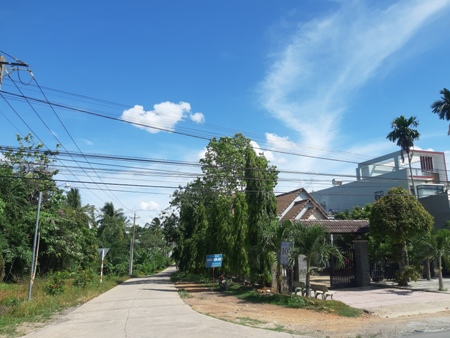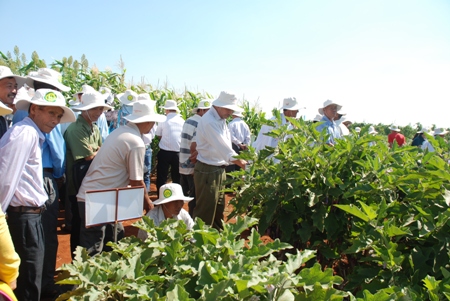
The face of rural areas has seen a lot of changes
The outline is aimed at orienting and directing the
province’s agricultural development in the coming time; connecting agricultural
economic development with social and environmental development; simultaneously
promoting favorable conditions towards the building of a modern agriculture to
meet current and future needs, especially being proactive to respond to the
impacts of climate change and the requirements that are set out in developing a
sustainable agricultural production.
The outline is required to comply with principles,
ensure closeness to reality, associate developing stable and sustainable raw
material areas with the process of industrialization and modernization of
agriculture and rural areas to step by step investing in depth, renovate
technology and equipment to expand production areas, increase the value of
agricultural products, meet domestic and international market requirements, and
fully promote the highest efficiency of local resources and advantages.
The duration for implementing the outline is 8
months. The targets of the project are farmers, farm owners, cooperative groups,
cooperatives, and enterprises that are engaged in local agricultural production.
The contents of the outline include assessing
resources related to sustainable agricultural development like natural
conditions and natural resources, and socio-economic conditions; assessing the
reality of agricultural economic development in the period of 2015-2019 in terms
of total product value, growth rate, income per unit area, and so on; assessing
the current state of technical infrastructure for agriculture, forestry and
fishery production and the current state of commercial infrastructure for the
agricultural sector, and human resources.

Farmers visit a model of high-yield agricultural
crops
The second content is assessing the reality and
forecasts that are related to sustainable agricultural development including
assessing the reality of agricultural production in fields of cultivation,
livestock, fishery, and forestry; implementing the national target program on
building a new countryside; assessing mechanisms, policies and the real
implementation of policies for production, business and investment in
infrastructure for agricultural production; factors affecting sustainable
agricultural production; providing forecasts related to sustainable agricultural
production to 2025, advantages, disadvantages, and challenges.
The third content is developing a sustainable
agriculture of Dong Nai province until 2025 including the sector’s development
viewpoints, general goals, specific goals, and development orientations for each
field in the agricultural sector; and key tasks and solutions including
conducting production associated with processing of each field (cultivation,
livestock, fishery, forestry, preservation, preliminary processing, post-harvest
processing, and calling for investment in agro-processing factories); developing
science and technology like promoting the application of science and technology
and high-tech agriculture, conducting a production that meets export standards
(Viet GAP, GlobalGAP and organic) associated with developing hi-tech applied
agricultural areas; applying information technology, biological technology, and
new technology for production, self-control, and smart production; registering
for protection of brand names and trademarks of the province’s outstanding and
key agricultural products; developing infrastructure including irrigation
projects, power grids, transport infrastructure, clean water supply systems,
markets, trade centers, warehouse systems, and so on.
Duy Minh (Thanh Ngoc)